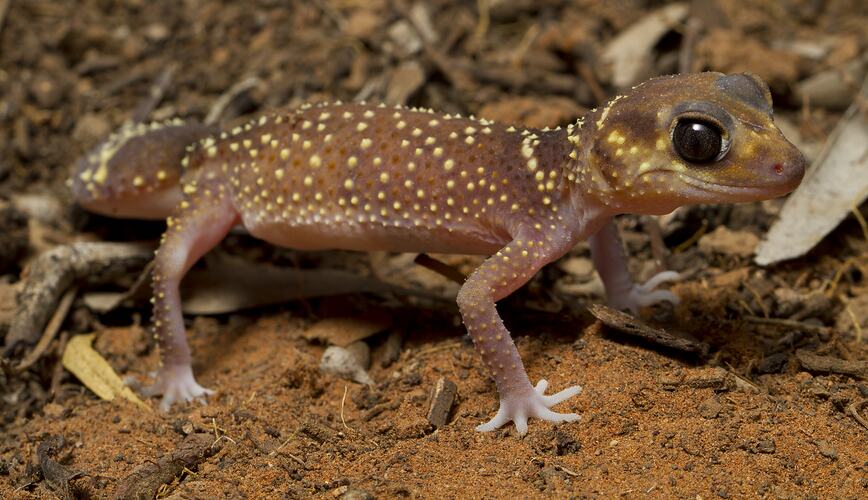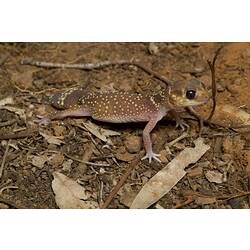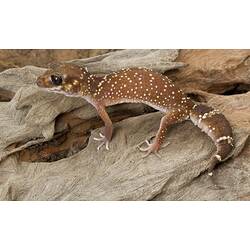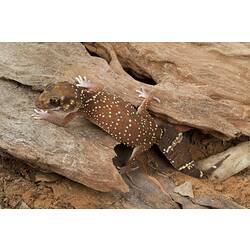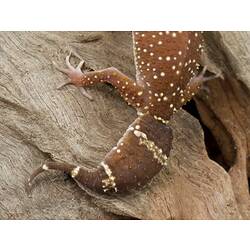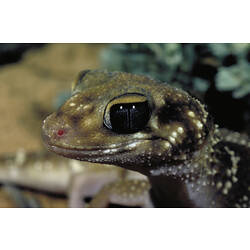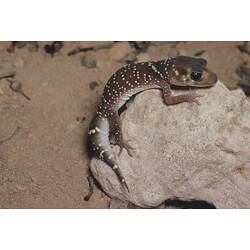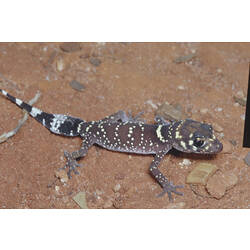General Description
Body purple to brown with small white spots. Tail black with white stripes across, and carrot-shaped. Up to 10 cm long (snout-vent).
Biology
Thick-tailed Geckos can be very common in small areas, often being found in aggregations of multiple individuals in their daytime shelters. They are a nocturnal species, foraging at night for insects. When threatened, they will make a barking defensive sound. If they need to regrow their tails, the new tails will be slightly different shapes and colours. As with most geckos, female Thick-tailed Geckos lay two hard-shelled eggs.
Distribution
Southern mainland Australia.
Habitat
Dry sclerophyll forests, rocky areas and shrublands.
More Information
-
Animal Type
-
Animal SubType
-
Brief Id
Flat fat tail, stripes across tail, brown and white spots.
-
Colours
Brown, Black
-
Habitats
-
Diet
Carnivore
-
Diet Categories
Insects, Invertebrates
-
Endemicity
-
Conservation Statuses
CITES: Not listed, FFG Threatened List: Not listed, EPBC Act 1999: Not listed, IUCN Red List: Least Concern
-
Taxon Name
-
Scientific Author
(Bory de Saint Vincent, 1825)
-
Common Name
Thick-tailed Gecko
-
Kingdom
-
Phylum
-
Subphylum
-
Class
-
Subclass
-
Order
-
Suborder
-
Infraorder
-
Family
-
Genus
-
Species Name
milii
